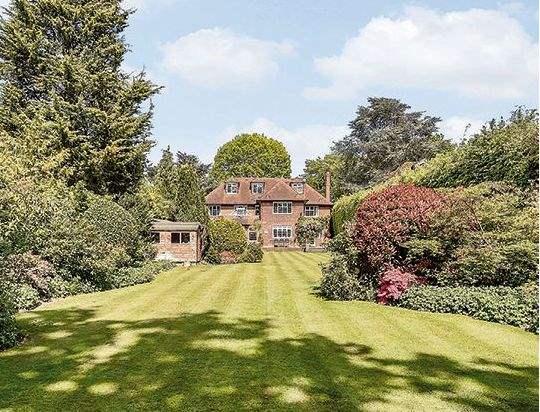Between 1979 and 2014 the prime central London market delivered average annual house price growth of 5.7% above the rate of inflation – despite going through large peaks and troughs. During that time, three distinct phases underpinned performance.
Since 1979, the performance of central London’s prime residential real estate has been underpinned by three influential phases. Now, against a backdrop of political and economic uncertainty, we assess its prospects as the market enters a fourth phase
.png)
FIGURE 4Tracking change Prime central London prices compared with trend line growth (5.7% per annum above the rate of inflation)
Source: Savills Research
As we go forward, the prospects of a recovery are linked to whether we are entering a fourth phase – one where higher taxation and changing relative returns from other assets result in different drivers of price growth.
To bring this into context, we need to understand what happened before.
Phase 1
Domestic (pre-1984)
Prior to 1984, London was depopulating and underperforming the rest of the south-east of England economically. London was a national capital, a centre of parliament, arts and culture, but not yet a globalised financial centre.
At this time, the prime real estate market was dominated by domestic buyers. Compared with the country, urban living was relatively unfashionable, typically linked to work or a need to be in London. Leafier, outlying prime districts, like Hampstead or Richmond were often preferred to more central areas, such as Mayfair.
During this period, price movements in prime London were closely linked to the domestic economy, so were more similar to the mainstream UK property market than they have been subsequently.
Phase 2
Promotion (1984-2007)
The promotion phase was characterised by an extraordinary period of globalisation and the emergence of London, alongside New York, as a premier world financial centre and a focus of global attention.
London’s ascendency from the first division into the premier league was kicked off by Margaret Thatcher in 1983, when plans to end restrictive practices in London’s stock exchange were announced. The subsequent deregulation of the financial sector in 1986 enabled a massive expansion. Over the years, this, in turn, boosted many other areas of the London economy.
First, US and other foreign banks bought out traditional British merchant banks and stockbrokers. This injected new wealth into the market as the proceeds of these acquisitions fell into the hands of erstwhile company owners and partners – boosting both purchasing power and new demand.
Second, new business owners, bankers and traders started to arrive from overseas, boosting demand for homes in the city centre. A new breed of Londoner arose; young, wealthy professionals working long hours and wanting a city home with minimal commute.
As London developed as a world city, so it became a magnet for increasingly wealthy individuals from around the globe. The market was susceptible to events in the financial markets, such as the 1997 Russian debt crisis and the bursting of the dotcom bubble, but recovered quickly. When affected by the recession of the early 1990s, it was still the quickest to bottom out and recover most strongly.

▲ Lancaster Gardens, Bayswater
Phase 3
Post-global financial crisis (2007-2014)
Since the global financial crisis (GFC), London has remained a sought-after global city of high international standing, but, we would argue, its prime markets have been influenced by different forces than the ones that drove it in the previous phase.
The characteristics of the post-GFC phase have been like other global cities, such as Hong Kong and Singapore. The period 2009 to 2014 saw high asset price inflation because of quantitative easing (QE) and its consequent low global interest rates. Large amounts of global capital sought safe-haven assets in this period and prime London property also fitted the bill.
The market absorbed several successive increases in stamp duty over this phase, until the end of 2014 when further increases in stamp duty heralded price falls, as the market adjusted to a new tax environment as well as the tapering of QE and increased expectation of rising global interest rates.
Phase 4
Post-quantitative easing (2014 onward)
While being some way above their 2007 levels, prices in the prime central London market are now 15.2% below their 2014 peak. This is not just because of stamp duty. For a £5 million property bought as an investment or second home, the fall in value is more than four times the extra stamp duty now payable.
Other tax factors are also at play. These include more exposure to capital gains tax and inheritance tax for overseas owners. This higher tax environment makes this part of the market far more sensitive to changes in underlying sentiment.
As we stand, that sentiment has been knocked by the political uncertainty fuelled by Brexit. It has not been helped by the uncertainty surrounding city employment when cities, such as Paris, appear to be ready to roll out the red carpet to the banking industry.
At the same time, QE has been halted and global interest rates have stopped falling, with increased expectations of rate rises and more focus on yields.
This all suggests a permanent departure from the historic trend line. It is difficult to see what could support the huge surge in prices that would be needed to make up for lost ground on an ever-upward arching curve of prime London house prices.
The rocket-fuelled promotion phase is over. London’s rise to an elite group of world cities is complete and it has secured its place in this company. It cannot see another promotion, but it can maintain its global status.
Irrespective of the decision to leave the EU, London will retain the features that make it unique in this group – the quality and accessibility of its real estate underpinned by constants such as language, culture, education and legal structure. Whatever the challenge from other cities, it will almost certainly remain a key global financial centre and can develop as one of several major European hubs for the growing tech sector.
This means London’s prime housing stock will continue to benefit from new sources of domestic wealth generation, as well as attracting wealthy overseas buyers. Returns in future will reflect this low-risk world status.
So, when prime London real estate once again represents identifiably good value and the fog of uncertainty clears, we expect a return to growth.

▲ Oxshott Way, Cobham, Surrey
.png)
FIGURE 5Five-year forecast The future performance of prime London will reflect the capital’s low-risk world status. Elsewhere, much depends on economic drivers and the extent to which they support a wider ripple effect
Source: Savills Research Note These forecasts apply to average prices in the secondhand market. New-build values may not move at the same rate
Prime central London timeline and forecast 2013-2022
.jpg)
Prime outer London and the country
The factors that drive the central London market are not as relevant to other prime markets.
The other prime London housing markets have a far more domestic buyer profile. So, while they can be affected by the migration of housing equity from central London, they are less affected by the concerns of international buyers. By contrast, they are more influenced by the state of high-value employment markets, such as finance, banking and the growing tech industry.
Similarly, factors such as the availability and cost of mortgage finance play their part – though not to the same extent as in the mainstream markets.
The flow of wealth out of London plays a significant role in our forecasts for the prime housing markets of the commuter zone. Here, the price gap that is reflected by the difference in what you can buy for £1 million is an important factor, especially as the market becomes more fluid (see The million pound questions).
Further from London, much depends on more general economic drivers and the extent to which they support a wider ripple effect.
To arrive at our forecasts we have made the following assumptions
• A Conservative minority government remains throughout the period to 2022
• The London economy grows by 11% over the period of the forecast (2018-2022)*
• Job losses in the financial and insurance sectors are contained to no more than 20,000 (a similar scale to those seen in the early 1990s and post credit crunch). Employment in these sectors is retained at circa 350,000 over the remainder of the forecast period
• Bank base rates increase to 1.81% by the end of the forecast period*
• Transitional agreements are put in place to minimise business disruption as the UK leaves the EU
• Brexit ultimately results in a free-trade agreement with the remaining EU members
• There are no further changes to stamp duty
• The 2022 general election is close run, assuming the main political parties maintain the same broad policy agendas currently adopted.
*According to Oxford Economics



.jpg)

.jpg)
.jpg)
.jpg)